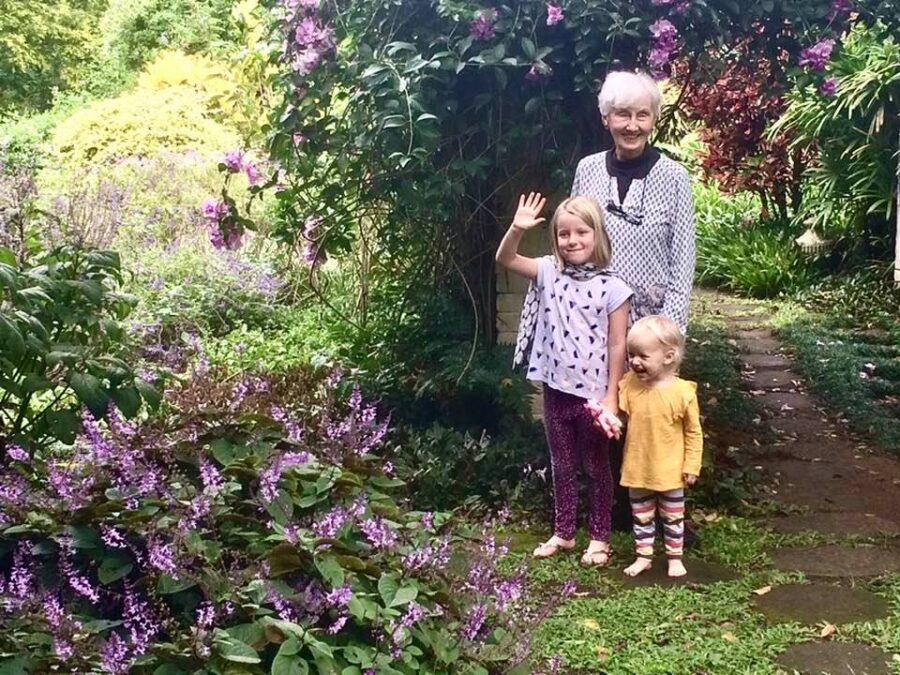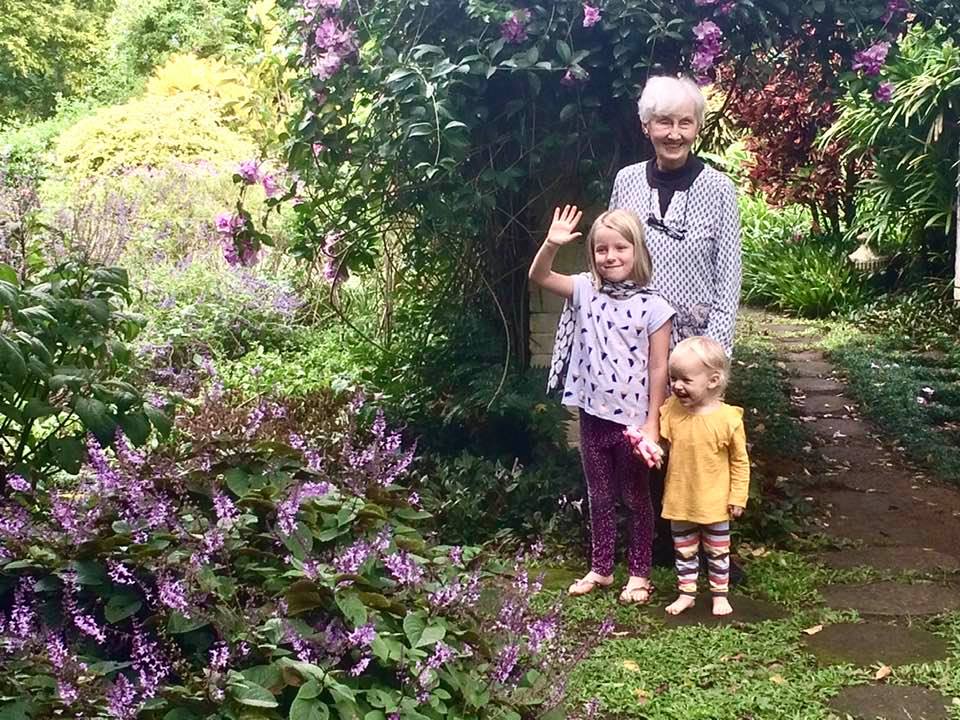
South Africa’s Famous ‘First Lady’ of Flowers Rosemary Ladlau Passes Away
South Africa’s “First Lady” of flowers, Rosemary Ladlau, has died at her home in KwaZulu-Natal, a month before her 95th birthday. Well known local author Erica Platter has written this beautiful tribute to a remarkable woman… Messages of condolence and appreciation for Rosemary’s inspirational life, and her talents as a flower arranger and gardener, have […]

South Africa’s “First Lady” of flowers, Rosemary Ladlau, has died at her home in KwaZulu-Natal, a month before her 95th birthday. Well known local author Erica Platter has written this beautiful tribute to a remarkable woman…
Messages of condolence and appreciation for Rosemary’s inspirational life, and her talents as a flower arranger and gardener, have flowed in from all over the world. Her contributions to her local Umhlali community have elicited no less a response.
Rosemary had become an international celebrity in the flower arranging universe, recognised and feted everywhere she competed, judged and demonstrated, from the palace of Versailles and the historic halls of Ghent (where Princess Fabiola offered to act as her assistant), to the boulevards of Monaco, where at the 13th Concours International de Bouquets she received three gold medals and the Best on Show award, a silver champagne server, from Princess Grace.
It was a talent she did not know she possessed when she first came to Beverley Estate, on the Shakas Rock road, as the bride of sugar farmer Winston (Mannie) Ladlau.
She was Rosemary MacDonald, a country girl, brought up on a farm in Groutville. But she had spent much of her young life away at boarding school (St John’s) and then the University of Natal in Pietermaritzburg, where she graduated with a BA in English and History. Her student teaching experience included a stint at Umhlali School.
They met at a dance to welcome home servicemen. Rosemary’s own father, Hector, a fighter pilot in both World Wars, did not return. His plane crashed off the coast of Ghana.
Rosemary’s first garden was a jungle of huge trees and wild foliage. She began to tame it, helped by old hands in the area like Vera Hulett of Bogmore and her mother Kay, who grew English annuals and vegetables for sale. Young wives were encouraged, if not ordered, to enter the local agricultural and WI shows held in the old VCFA hall. Rosemary’s first arrangement of leaves and berries in a copper saucepan (a wedding present) was penalised because the judges could spot the stem-securing chicken wire. Never again did she make such a simple mistake.
By the 1950s she and other young friends like Jenny Hamlyn proved so adept that they were asked to give classes as far afield as Zululand. Rosemary became a founder member of the Natal Panel of Floral Art Judges in 1960, later its president. And an accredited demonstrator, passing this exam with Honours.
She had found her metier.
For despite suffering miserably with a crippling stutter, she found that flowers succeeded where many years of speech therapy had failed. When engrossed with flowers and in sharing their beauty, she would recall, “my stutter improved in a miraculous way”.
Flowers, she came to believe, and foliage, bark, twigs, berries, “have special therapeutic and healing qualities that ease the stresses of life, for it is said that you cannot perceive beauty but with a serene mind”.
Rosemary and friends developed a distinctive “Natal” style, featuring local, often indigenous plants, very naturally arranged as if in a garden or forest. In the 1970s they began to demonstrate all over South Africa. Soon the “Natal girls’” style and plant material, accessorised with local arts and crafts like Zulu pots, woven sleeping mats and Rorkes Drift fabrics, had become the most exciting new direction in international flower circles.
In 1975 Rosemary and her colleagues began to demonstrate, judge and compete abroad. They were invited to participate in the flower world’s two most prestigious events: the Floralies in Belgium, and the International Flower Show of the Garden Club of Monaco, founded by Princess Grace. They later staged honorary exhibits at a series of World Flower Shows.
In 1981 Rosemary was asked by publishers Struik to write a book. Her accessible, instructive Flower Arranging for the South African Home, illustrated by local artist Sharneen Thompson, became an instant best-seller.
In 1996 she was inaugurated as the new President of the World Flower Arrangers Association (WAFA), and when this body elected to hold its 1999 World Show in newly-liberated South Africa, Rosemary was chosen to lead the organising committee. The host city, after a tour around the country, would be Durban.
She and her team pulled off a spectacularly successful event. If she wasn’t recognisable by the international flower community before, she certainly was thereafter.
Between her international travels and commitments, Rosemary’s involvement in and contribution to the local community did not waver. A staunch member of the All Souls Anglican congregation, she initiated its renowned fundraising floral festivals; regularly arranged the flowers for Christmas, Easter and other holy days, and transformed a myriad wedding marquees and even funeral services into occasions of natural beauty.
She was a strong believer in the power of flowers to break down old racial and political barriers, and taught the principles of arranging across communities; a group of women from Groutville were among her keenest pupils. She was also the founder of the very active Umhlali Garden Club.
Her own 4ha farm garden grew ever more spectacular as she drew inspiration from her travels. Its tennis court became the venue for overflow matches from the famous Umhlali Tennis tournament. From a bank under a frangipani tree you might have watched Wimbledon champion-to-be Virginia Wade (whose father was the then Archdeacon of Durban) and a host of South African Davis Cup stars. They loved this country event, and the Ladlaus’ hospitality.
Enthusiasts from around the world visited to admire Rosemary’s artistic blend of indigenous and sub tropical foliage and flowers, which was featured in numerous books. One of the most prized plants is the Rosemary Ladlau rose, named after her by grower Ludwig Taschner, exquisitely scented and a shocking pink colour which she herself loved to wear.
This heritage garden remains in the historic heart of what is now known as Simbithi Estate, but was previously the Ladlau farm. When sugar farming became marginal in its coastal location, the family decided to sell to the Taylors of The Elan group.
What to call the new estate?
Fittingly, it was Rosemary who dreamed up the name, referencing one of the many indigenous trees in her forest garden.
The flags were flying at half-mast on Simbithi as the estate, her home for nearly three-quarters of a century, remembered and honoured her.
Mother of three daughters, who also live on the estate, grandmother of six, great-grandmother of 11, Rosemary Ladlau will remain a legend, loved and admired by all who knew her.